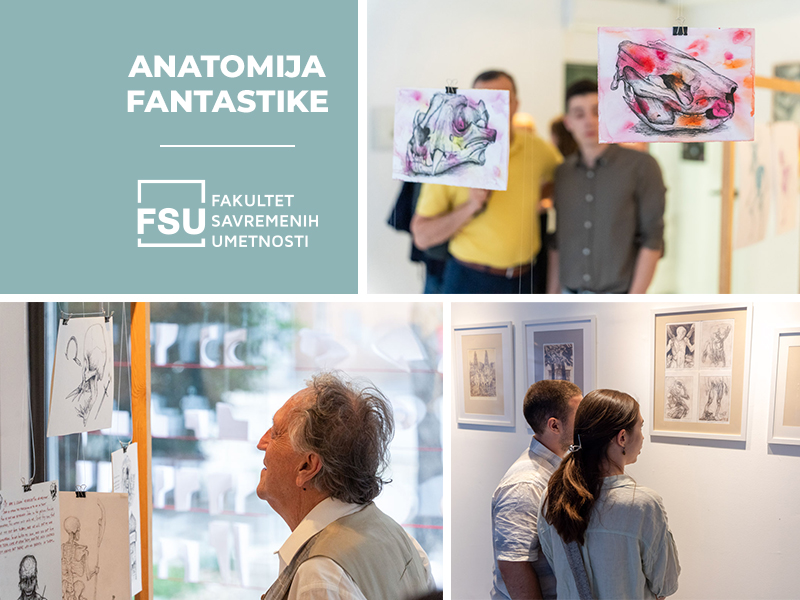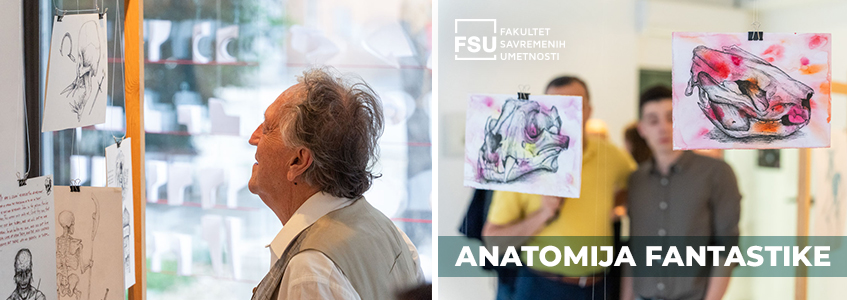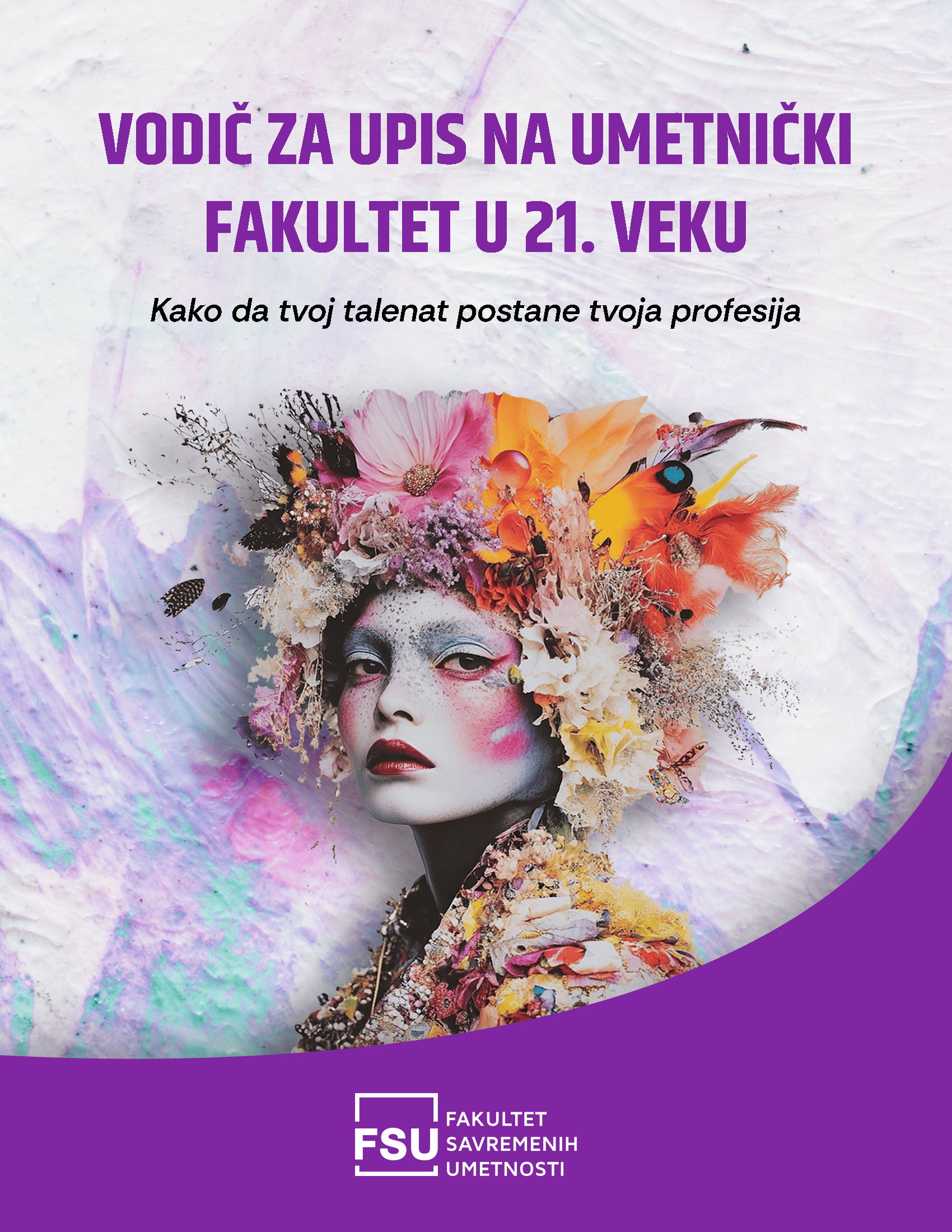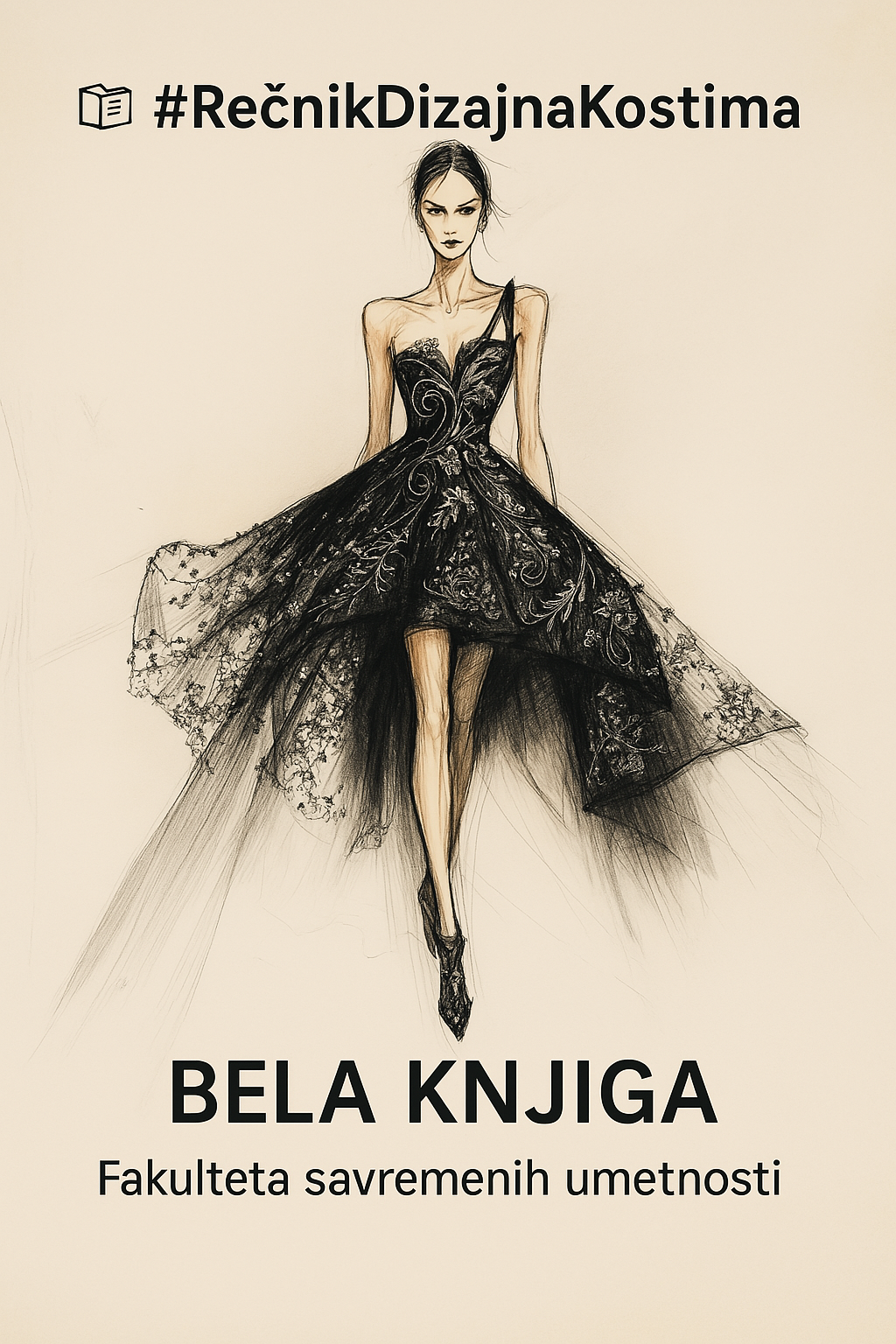
EXHIBITION “ANATOMIJA FANTASTIKE” OPENED
Andjela Petrovic / / News / 13. 07. 2023.
The grand opening of the exhibition “Anatomija fantastike” was held on Wednesday, June 14, at 7 p.m., at the Gallery of the Faculty of Contemporary Arts (12 Svetozara Miletića Street).

The exhibited works were by:
- Miodrag Bajić;
- Dejan Mandić;
- Ružica Bajić Sinkević;
- Vesna Pejović;
- Aleksej Vešneveckiij;
- Anastasija Pervova;
- Bratislav Vasilić;
- Milan Radomirović;
- Milica Vuković;
- Nataša Matović;
- Bojan Đorđević – Omča;
- Jovan Vesković.
The exhibition was curated by Assoc. Prof. Mr. Ružica Bajić Sinkević and Prof. Irina Tomić.
Anatomy is both a science and an art of studying various parts of any complex creature, whether existing or imagined. Whether it’s about bare bones, the internal organization of beings, musculature, or the organism with all its layers, it all falls within the realm of anatomical study.
The term “fantasy” has several basic meanings. It can be used to describe exceptional quality, with synonyms such as wonderful, excellent, and extraordinary. According to its oldest meaning, from Proto-Indo-European, it’s a verb meaning “to shine”, from which the Greek word “fanta” (φάντα) later emerged, denoting brightness, and brilliance. From the same root, the most widespread meaning evolved, appearing in ancient Greek (phantastikós (φᾰντᾰστῐκός)): something invented, miraculous, strange, or unreal.
If the anatomy of animals is zootomy, the anatomy of plants is phytotomy, and the anatomy of humans is anthropotomy, then the anatomy of fantastical beings could be called the anatomy of fantasy or fantastictomy.
From the prehistoric lion-man, through winged Inanna with claws or Egyptian sphinxes, Chinese dragons and the Cretan Minotaur, to the Gruffalo, Wrackspurt, and Flobberworms from J.K. Rowling’s novels or creatures from space in science fiction novels, humans have always had a need to enrich their cultures with fantastical beings. Researchers of the living world and artists, however, were not only preoccupied with “magical” creatures but also with existing animals, which often looked unreal themselves. After all, the animal kingdom has not yet been fully understood to this day. Taxonomists describe thousands and thousands of new species every year, and paleontologists also describe new species, studying them based on bones, fossils, coprolites, or even fossilized dung.
The exhibition “Anatomija fantastike” encompassed creatures born from the imagination of artists, mythological beings, but also existing living creatures fascinating in themselves. As a special part of the exhibition, depictions of natural anomalies in animals emerged, which have always further fueled human imagination.
See photos from the exhibition:
 |
Registration IS open. |
| APPLY AND BECOME PART OF THE CLASS OF 2025/26 » |







